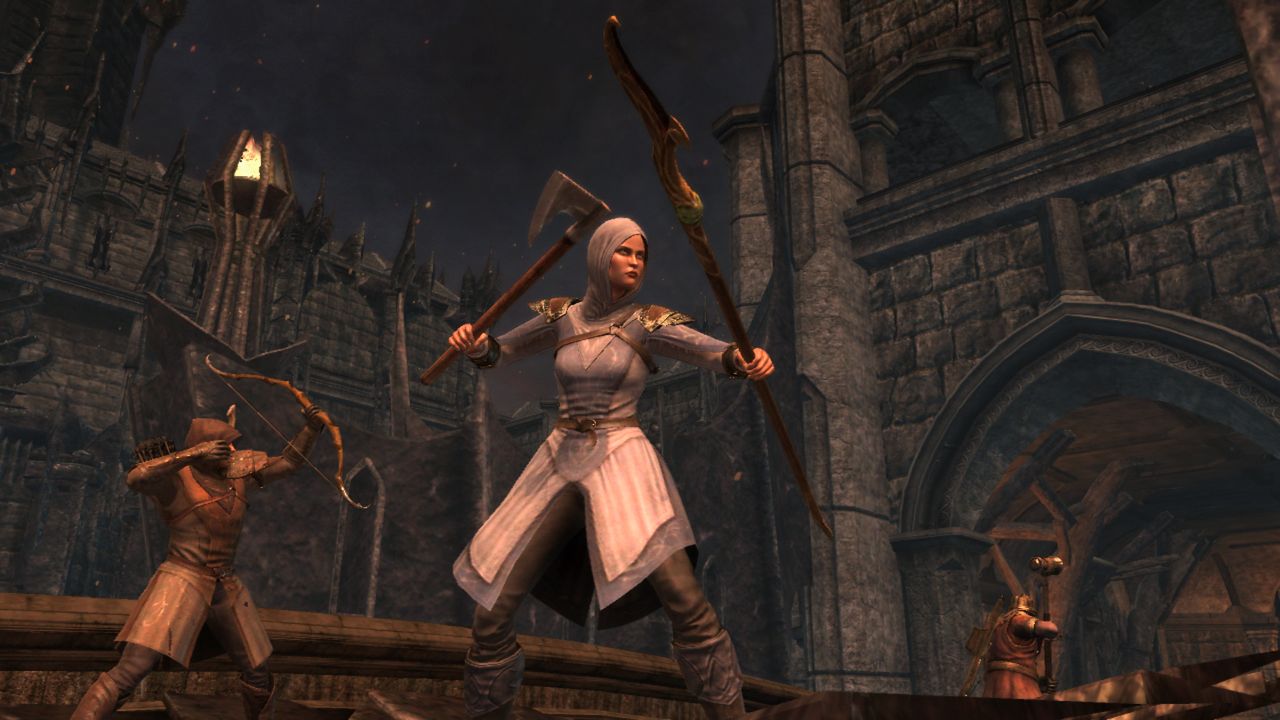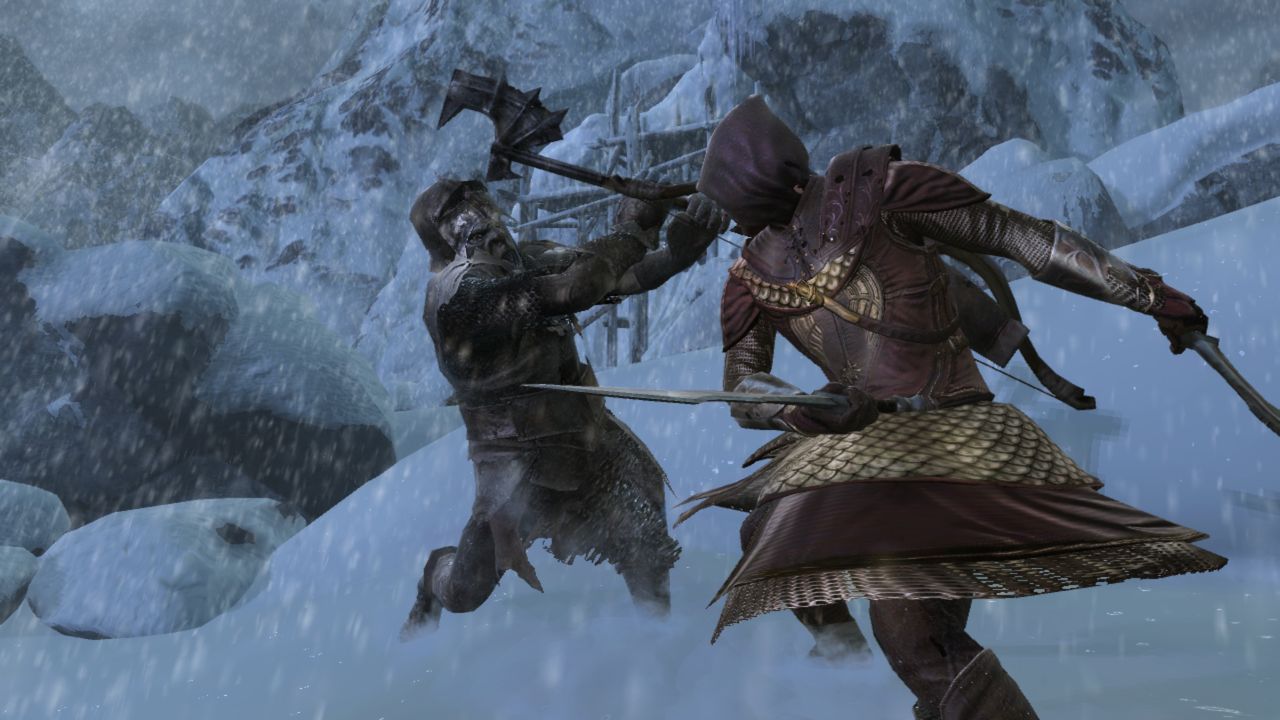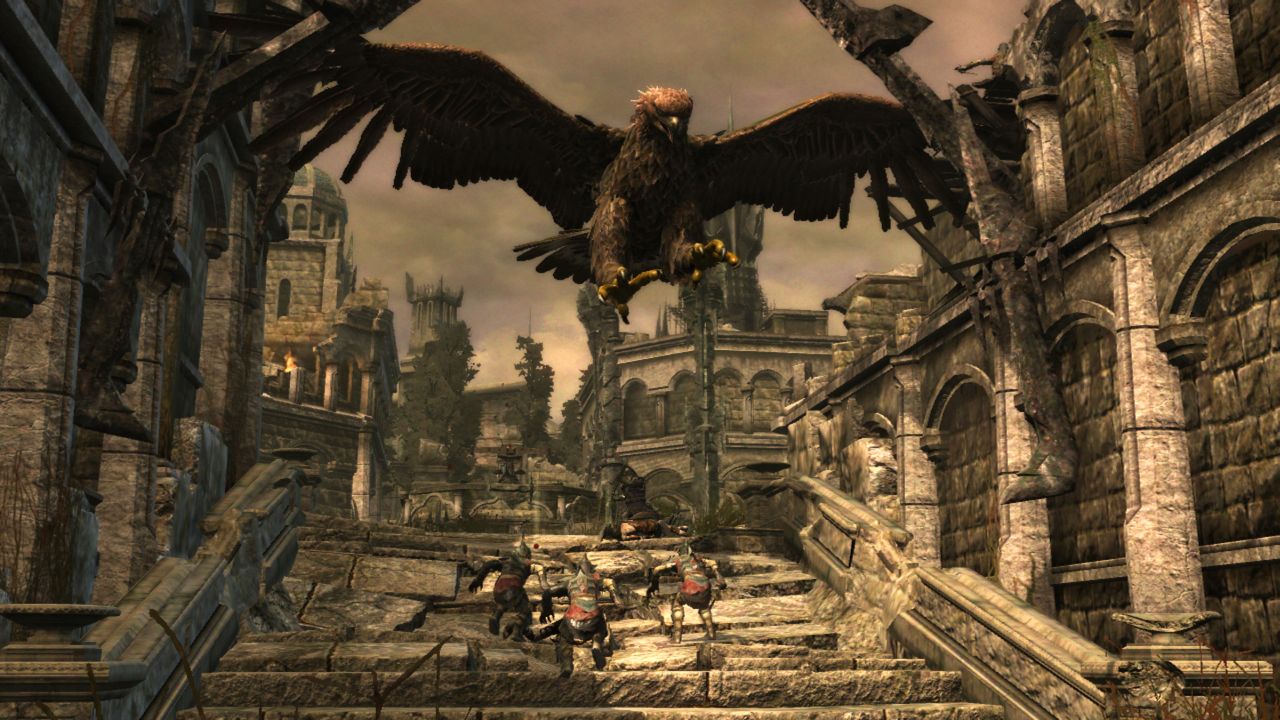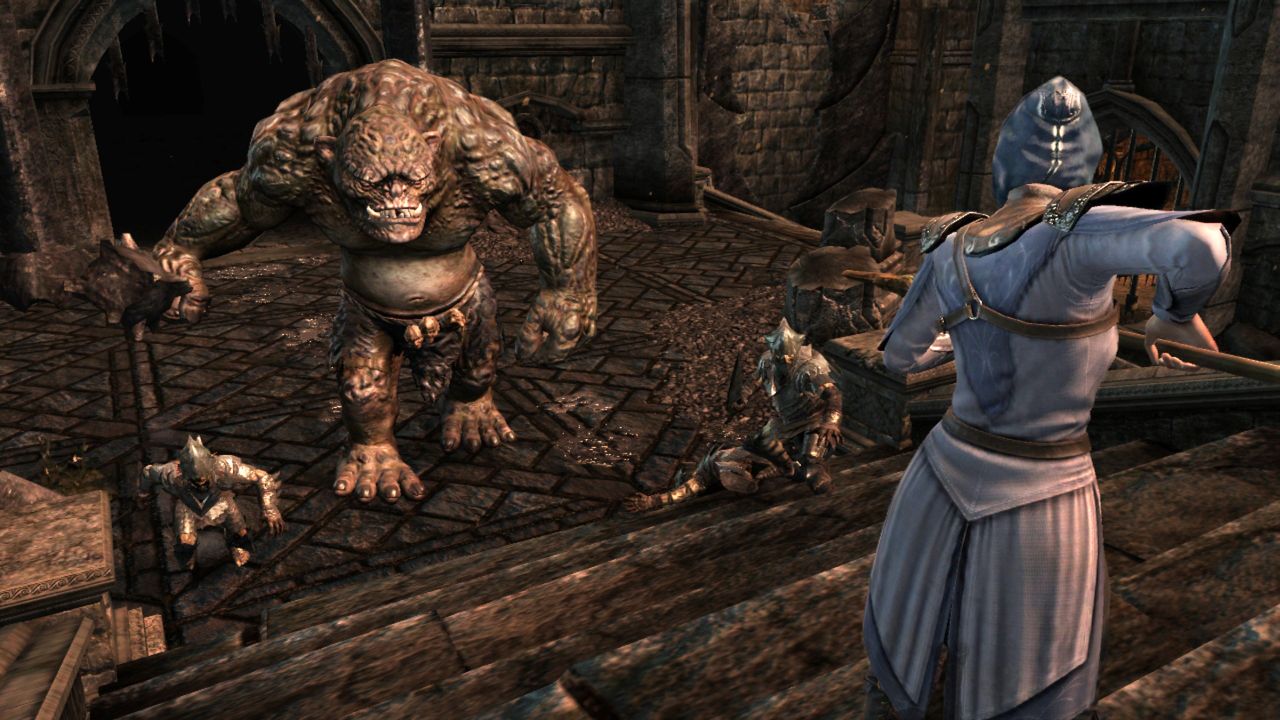LOTR: War in the North Review
Posted by
sirdesmond
on
It’s been over seven years since the release of The Lord of the Rings: Return of the King and four years since the last substantial Lord of the Rings video game release with The Lord of the Rings Online: Shadows of Angmar. Now, as we approach the coming release of the first of two Hobbit films, Warner Bros. Interactive has dug up the license and released a new and entirely original Lord of the Rings RPG developed by Snowblind Studios, developer of similar titles in the past like Baldur’s Gate: Dark Alliance. With all of the advancements made in the RPG genre with recent games like Mass Effect, Dragon Age, and The Witcher since the last Lord of the Rings title of this kind, does the franchise make a successful jump into the massive and player-choice driven world of the modern RPG or does it all just feel a bit old? The fact that I’m asking this question is probably enough of an answer.

The game’s story, which separates itself almost entirely from the locations and set pieces of the films (although some characters and locales do cross over) is interesting , but only at face value, because it is something outside of the classic trilogy’s storyline. The story has you, one of three standard LOTR characters, taking part in the fight against a servant of Sauron who has holed himself up in the northern areas of Middle Earth. The beginning of the game felt a bit disjointed as I was never sure of how my dwarf had come to know his two companions and how we were related, if at all, to the existing conflict. It needed a bit of a Fellowship moment that could have been as simple as an opening cutscene. Without this, I felt a bit lost right off the bat.
Starting in Bree, the story carries the player through a number of well-known locations, although more so from the books than the films. It feels more like a connect-the-dots basic structure of a story that has been designed to get you and your companions from all of these locations than it does a truly appealing or character driven plot. It fails to be all that engaging, complex, or enticing. The game’s Mass Effect-style dialogue scenes help to give each quest and the characters a bit more meat to work with, but even these lack any sense of moral or massively story-altering decision making which has become one of the best aspects of RPG gaming in recent years. There is some roleplaying to be done here, but unfortunately, it is for show more than anything else.

The game’s combat system, making up a vast majority of the gameplay, is fairly standard. Each character has a light and heavy attack, a ranged attack (a spell, crossbow, or bow depending on the character), a dodge, a block, and a counter. As you progress in the game, you skill up your character through stat points (which are poured into the standard RPG stats like strength, dexterity, etc.) and skill points used to unlock a number of special abilities across several different tech trees. The combat has a fun and easy flow to it, but the game lacks any adequate level of difficulty and the combat lacks any substantial level of complexity that would give the player something to learn and develop as he or she progresses through the game. It is fairly fun, but mostly forgettable.
Playing alone, I found my AI companions to be little more than something to grab some enemy agro while I fought through a few dozen other of the countless goblins and orcs you’ll find yourself pitted against throughout the campaign. While there is a basic system for issuing commands to your companions while in singleplayer (attack, defend, go here, etc.) and even the ability to give them better weapons and equipment, I rarely found the need to do so while playing the game on its standard difficulty. Andriel, the elf Loremaster, was always good about throwing out heals to my dwarf when he started getting low which was helpful, but I never needed to command her to do so. While something interesting could have been done with this system (as is the case with many aspects of this game), it is mostly only there on a surface level, able to be used if desired but just fine without.

War in the North features the very unusual option of a three player cooperative mode. Acting exactly as the singleplayer, it allows three people to group up and fight against the growing hordes of Sauron. Like almost all co-op modes, it can make the somewhat bland experience of the game’s combat and storyline much more interesting and fun when you have a few friends at your side, but fundamentally, the experience does little to change or grow the game in any really meaningful ways.
In the end, The Lord of the Rings: War in the North is an acceptable and fully capable entry into the Lord of the Rings franchise, but through its lack of more modern RPG mechanics and an overall sense of originality, it all feels very much like a title straight out of the Xbox, PS2, and Gamecube era of yesteryear. Time and again throughout my experience with the game, I found myself thinking of some great and exciting moments from the older movie tie-in games like The Lord of the Rings: The Two Towers.

The overall experience is a good one and the story is an entirely new tale set in Middle Earth, yet it is hard for it to feel all that different with its simplistic combat system and a cast of three very trite characters, so much so that even the human ranger (acting as a clear analogue for Aragorn) is specifically identified as also being a Dúnedain. The inclusion of Bioware-style dialogue options worked well, but everything else felt five or more years behind the times. If you are a Lord of the Rings fanboy like me than I would suggest checking it out despite these issues, but if not, there are plenty of better, but similar games you could be spending your time with.
* Review based on the OnLive version of the game, thus no PC specifications or scalability were tested
